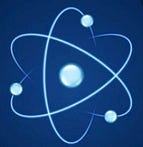Rutherford Backscattering Spectrometry (RBS)

Rutherford Backscattering Spectrometry (RBS) is one of the most reliable analyses that characterize thin film samples non-destructively. It is both a qualitative analysis that identifies the component elements and a quantitative one that gives the stoichiometric ratios. The technique does not call for sample references.
The analysis procedure involves bombarding the specimen film with high-energy (0.5–4 MeV) Helium ions, hence giving it the name High-Energy Ion Scattering (HEIS) Spectrometry. The nuclei in the film repel the high-energy ions — the repulsion or backscattering by each element being at a characteristic angle, energy distribution, and yield. Thus, we understand the composition and layer depths of the sample.
Helium being a noble gas, the ions are relatively stable as well. The sample composition is not therefore altered by the collision.
RBS has proven its worth in strengthening the domains of semiconductor and thin-film technologies by maximizing efficiency to size (thickness) and expense and by recruiting new materials. The technology is based on a 110-year-old empirical concept, perfected through the years. To further outdo the past, we have espoused the technology while fending off trivial pitfalls regarding assumptions about experimental parameters, the sample, and the basic data used.
Synthesized or naturally occurring (like Chrysotile), the component layer thickness or depth, surface composition, and thus purity are obtained with desirable accuracy using RBS technology. Backscattered particles are measured by high-sensitivity solid-state detectors that prevent all possible errors. Films of thickness up to 1μm can be characterized.
Primary Uses of RBS
● The composition and stoichiometry of a sample can be found and the specimen can be characterized. Areal concentrations may be determined.
● The thickness, layer depths, and film density can be calculated for thin films.
● Near-surface structural order and level of crystallinity can be studied.
Special cases where RBS is proven advantageous
● Valuable and important single-crystal substrate samples can be analyzed and characterized.
● The changes in the composition of colloidal nanocrystals during cation-exchange reactions can be studied.
● Helps to determine the concentration of metal ions diffused in polymers.
● Composition analysis of reverse osmosis membranes can be carried out.
● Hydrogen measurements can be done in HFS mode.
Advantages of Rutherford Backscattering Spectrometry
● Non-destructive; does not alter the composition of most samples.
● Quantitative analysis that does not need a reference sample, unlike SIMS or XPS.
● Highly sensitive to heavy elements in the order of parts per million (ppm).
● Depth resolution is of the order of several nanometers (nm).
● Both conductive and insulative samples can be studied as it depends rather on the characteristics of the component nuclei.
Drawbacks of Rutherford Backscattering Spectrometry
● Both information and study are limited to ~1μm from the surface of the sample.
● The analysis area is relatively large, at about ~2 mm.
● The chemical structure of the sample cannot be studied.
● The technique is not as sensitive as Elastic Recoil Detection Analysis (ERDA) or Nuclear Reaction Analysis (NRA) for light elements.
● The sample should be compatible with vacuum.
Comments
Post a Comment